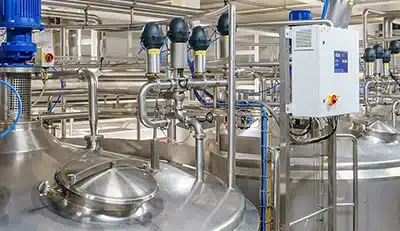Hygiene Validation, Verification, and Re-Validation
Sanitation failures in food production can lead to contamination, regulatory penalties, and significant financial losses. Ensuring that cleaning processes are effective requires more than routine cleaning—it demands a structured approach involving Validation, Verification, and Re-Validation. These three pillars of sanitation control help food manufacturers maintain compliance, improve efficiency, and protect consumers.
Understanding the Three Pillars of Sanitation Control
1. Validation: Proving Effectiveness
Sanitation validation ensures that a cleaning process effectively removes contaminants, including food residues and pathogens. This step involves:
- Scientific testing to demonstrate cleaning effectiveness.
- Use of ATP testing, microbial swabbing, and chemical residue analysis.
- Establishing documented cleaning protocols based on proven results.
Validation must be performed when introducing new cleaning chemicals, equipment, or processes to confirm they meet hygiene standards.
2. Verification: Routine Performance Checks
Once a sanitation process is validated, routine verification ensures that it continues to work effectively. This step includes:
- Regular ATP and microbial testing after cleaning cycles.
- Periodic visual inspections and audits.
- Reviewing sanitation records to ensure compliance with regulatory standards.
Verification helps detect any lapses or deviations from established cleaning procedures before they become major issues.
3. Re-Validation: Adapting to Changes
Food production environments are dynamic, with changes in raw materials, equipment, or sanitation products. Re-validation ensures that cleaning procedures remain effective when such changes occur. Re-validation should be performed:
- After modifications to production processes.
- When new contaminants or microbial risks are identified.
- At scheduled intervals to confirm ongoing sanitation efficacy.
Benefits of a Structured Sanitation Approach
Implementing a cycle of validation, verification, and re-validation provides several advantages:
- Reduced Risk of Contamination: Ensures that cleaning protocols effectively eliminate foodborne pathogens.
- Regulatory Compliance: Meets food safety standards, avoiding costly fines and recalls.
- Operational Efficiency: Identifies inefficiencies in cleaning processes, reducing downtime and waste.
- Consumer and Brand Protection: Prevents food safety incidents that could harm reputation and customer trust.
Final Thoughts
Sanitation failures can be costly, but they are preventable. By implementing a structured Validation, Verification, and Re-Validation process, food manufacturers can maintain high hygiene standards, ensure compliance, and protect both their business and consumers.
Is your hygiene program as robust as it should be? Now is the time to assess and strengthen your approach to food safety. Start the conversion by emailing hello@alphahygiene.ie












Leave a Reply